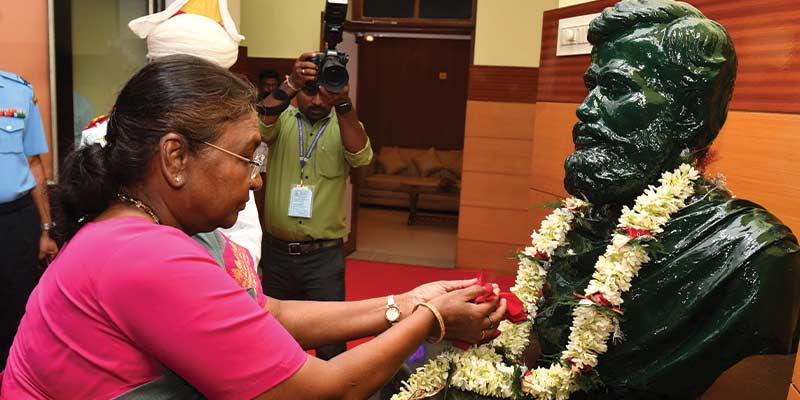- India
- Jul 08
Who was Utkalamani Pandit Gopabandhu Das?
President Droupadi Murmu said Utkalamani Pandit Gopabandhu Das’s contribution to social service, literature, education, and journalism was unforgettable.
She was delivering an address at a programme on the 96th death anniversary of Das in Bhubaneswar.
Pandit Gopabandhu Das
• Pandit Gopabandhu Das, also known as “Utkalmani” (The jewel of Utkal or Odisha), was an activist, journalist, essayist, poet, reformer, and social worker who actively participated in the Non-Cooperation Movement.
• He was born on October 9, 1877 in Suando village near Sakshigopal of Puri District in Odisha.
• Giving up on his rewarding practice at bar, Gopabandhu Das dedicated himself to the cause of freedom, besides working for social reform. During the course of his stay at Calcutta, he met the Vande Mataram group and was infused with the Swadeshi spirit.
• In 1909, he founded Satyabadi Bana Vidyalaya in Puri district.
• Gopabandhu Das was the first president of the Congress party in Odisha. It was due to his efforts that Gandhiji came to Odisha in the year 1921.
• Thereafter, people joined the Non-Cooperation Movement. Subhas Chandra Bose referred to him as the father of the national movement in Odisha.
• He began Puri Seva Samiti, a voluntary organisation that helped cholera victims. Later, this led to the setting up of a separate hospital in the district for the victims.
• He was one of the most popular literary figures of his time. He wrote some of the most well-known pieces of Odia literature.
• One of Das’s most popular poems was ‘Svadesa Chinta’ or ‘Patriotism of a Prisoner’, a long poem comprising 131 stanzas. He wrote this poem while he was imprisoned by the British.
• After the suspension of the Non-Cooperation Movement, he was arrested in 1922 and lodged in Hazaribagh jail for two years.
• After his release in 1924, he started the campaign to spread the message of charkha and other constructive programs of Congress.
• At the request of Lala Lajpat Rai, he joined the Servant of Peoples Society and implemented its various programmes. With the encouragement and sponsorship of Hindu Mahasabha, he also opened a widow rehabilitation center in Puri, besides campaigning against untouchability in the Hindu Society.
• He set up a press and introduced the weekly newspapers ‘The Samaj’ and ‘Satyabadi’ to arouse the people through criticism to government.
• Devoting his entire life and wealth to the service of the people and the cause of independence he fell ill and died at the age of 51 on June 17, 1928.
Manorama Yearbook app is now available on Google Play Store and iOS App Store

